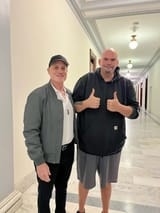Search Results
6/14/2025, 5:26:31 PM
>>507348349
https://archive.is/6p8iO
>Even before advocates for Israel had AIPAC, they had the tireless I.L. “Si” Kenen. A journalist and lawyer, Kenen had switched back and forth during the 1940s and early 1950s between working for American Zionist organizations and for the state of Israel.
>In the fall of 1953, Eisenhower briefly suspended the delivery of U.S. aid to Israel after it violated the terms of a U.N.-brokered armistice agreement with Syria by venturing into a demilitarized zone to try to divert the waters of the Jordan River. Eisenhower and Dulles resolved to use their leverage to get Israel to back off. However, Israel and the United States apparently agreed to keep Eisenhower’s action quiet in hopes of a quick resolution.
>But on Oct. 15, 1953, all hell broke loose. News spread that a special Israeli army unit had struck into the Jordanian-occupied West Bank and committed a massacre in the Palestinian village of Qibya, killing more than 60 civilians indiscriminately in retaliation for the murder of a Jewish woman and her two children in Israel on the night of Oct. 12.
>The strike reflected Israeli policy. Ever since the end of the 1948 war, Palestinians had frequently crossed the so-called “Green Line” into Israel. Most had been driven or had fled from their homes in what was now Israel and simply wished to return. But some committed violence against Israelis. Prime Minister David Ben-Gurion had fixed on a policy of reprisals — military assaults, intentionally disproportionate, on local Arab populations — as a response to any such attacks. After the Oct. 12 killings, Ben-Gurion and top colleagues chose nearby Qibya to suffer retribution.
>Israel’s most active U.S. supporters realized how severe the danger of damage to Israel was. Kenen wrote of the ill effect of Qibya on what he called “our propaganda.”
https://archive.is/6p8iO
>Even before advocates for Israel had AIPAC, they had the tireless I.L. “Si” Kenen. A journalist and lawyer, Kenen had switched back and forth during the 1940s and early 1950s between working for American Zionist organizations and for the state of Israel.
>In the fall of 1953, Eisenhower briefly suspended the delivery of U.S. aid to Israel after it violated the terms of a U.N.-brokered armistice agreement with Syria by venturing into a demilitarized zone to try to divert the waters of the Jordan River. Eisenhower and Dulles resolved to use their leverage to get Israel to back off. However, Israel and the United States apparently agreed to keep Eisenhower’s action quiet in hopes of a quick resolution.
>But on Oct. 15, 1953, all hell broke loose. News spread that a special Israeli army unit had struck into the Jordanian-occupied West Bank and committed a massacre in the Palestinian village of Qibya, killing more than 60 civilians indiscriminately in retaliation for the murder of a Jewish woman and her two children in Israel on the night of Oct. 12.
>The strike reflected Israeli policy. Ever since the end of the 1948 war, Palestinians had frequently crossed the so-called “Green Line” into Israel. Most had been driven or had fled from their homes in what was now Israel and simply wished to return. But some committed violence against Israelis. Prime Minister David Ben-Gurion had fixed on a policy of reprisals — military assaults, intentionally disproportionate, on local Arab populations — as a response to any such attacks. After the Oct. 12 killings, Ben-Gurion and top colleagues chose nearby Qibya to suffer retribution.
>Israel’s most active U.S. supporters realized how severe the danger of damage to Israel was. Kenen wrote of the ill effect of Qibya on what he called “our propaganda.”
Page 1
